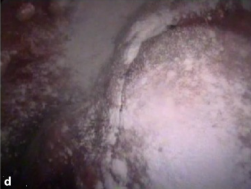Talc pleurodesis could help treat pleural mesothelioma

One of the common findings that people present with before being diagnosed with malignant pleural mesothelioma is a pleural effusion. It is estimated that 90 percent of patients diagnosed with malignant pleural mesothelioma present with pleural effusions. Pleural effusions can be present in greater than 50 different pleural, pulmonary, or systemic disorders. It is often the case that only after the common reasons for pleural effusions are ruled out, the diagnosis of malignant pleural mesothelioma made.
What is a pleural effusion ?
A pleural effusion is fluid buildup in the lining of the lung. There are two layers that line the lung – the visceral layer closest to the lung and the parietal layer lining the chest wall. These linings are very thin sheet like structures. The fluid that lubricates the two layers is the pleural fluid. Without disease there is usually 10-20cc of pleural fluid lubricating the visceral and parietal layers allowing the lungs to expand or contract. With a pleural effusion, the fluid builds up compressing the lung making it harder to breathe. Patients with malignant pleural mesothelioma often present with a gradual onset of pulmonary related symptoms: shortness of breath, cough, chest pain, and just not feeling well.
Successful management of pleural effusions can improve patients quality of life with malignant pleural mesothelioma. Treatment for pleural effusions can be a thoracentesis. During thoracentesis, fluid is drained out of the pleural space usually with ultrasound guidance.
What is talc pleurodesis?
Depending on the patients treatment options management of pleural effusions can also involve a procedure called talc pleurodesis. Talc pleurodesis involves inserting sterile talc or another irritant into the pleural space. The irritating substance helps the parietal and visceral layers adhere to the chest wall. The talc is an irritant that effectively eliminates the space. This procedure is used for some patients post surgery for mesothelioma to treat prolonged air leaks.
Recently, researchers have been looking at this procedure a possible front line treatment for patients. For some patients who are not candidates for surgery or choose not to have surgery, talc pleurodesis may be a way to stop the pleural effusion issue. Researchers found that patients who did not have pleural fluid issues live longer, as do patients that do not have fluid reculimating in the pleural space.
If you or your loved one has been diagnosed with malignant mesothelioma, go to a mesothelioma center of excellence for your best options. Research is constantly looking at the options available and hopefully progressing to a cure. It may be a new look at a procedure that is commonly done, or a new treatment for symptom management. Improving quality and survival it is best to be evaluated where this is their expertise in this rare cancer.




